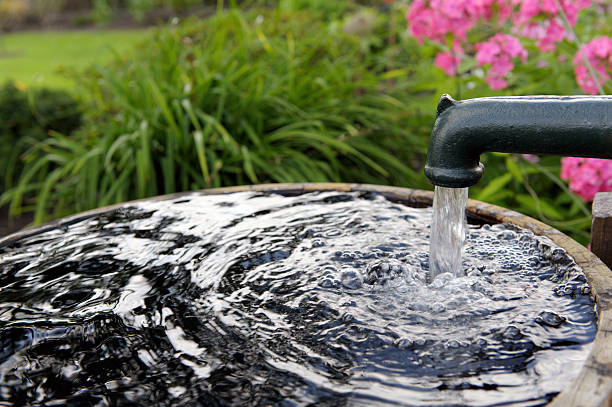Rainwater harvesting is the collection and storage of rainwater for reuse before it reaches the ground. It is a simple, sustainable, and effective way to conserve water, reduce flooding, and improve water quality. Rainwater harvesting can be used for many purposes, including domestic use, irrigation, and industrial use.
How Rainwater Harvesting Works
Rainwater harvesting systems can be simple or necessity in this situation time, depending on the needs of user. The most basic system consists of catchment area, such as roof or paved surface, and storage tank. The rainwater is collected from the catchment area and stored in the tank for later use.
- Crypto Trading for Beginners: Learn How to Make Money from Cryptocurrency Trading
- Best Cryptocurrency to Invest in India: Update for 2025
- How to Invest in Cryptocurrency in India (2025 Updated)
- Wedding Planning Business: Tips and Ideas for Success
- Secret Websites to Make Money: Online Work For Students
Benefits of Rainwater Harvesting
1. Reduces water costs
One of the biggest benefits of rainwater harvesting is that it can help to reduce water costs. In areas where water is scarce or expensive, rainwater harvesting can provide valuable source of water for irrigation, household use, and other purposes.
2. Boosts agricultural productivity
Rainwater harvesting help to boost agricultural productivity in rural area. In areas where rainfall is erratic or unreliable, rainwater harvesting can help a reliable source of water for crops for famers. This can lead to increased crop yields and improved food security in every weather.
3. Creates jobs
Installation and maintenance of rainwater harvesting systems can create jobs in the construction, engineering, and maintenance sectors. This can help to boost the local economy and provide employment opportunities for people in rural areas.
4. Improves water quality
Rainwater is generally cleaner than surface water according to research, such as river water or groundwater, because rainwater has not been exposed to pollutants such as agricultural runoff or sewage. Rainwater harvesting can help to improve water quality and reduce the risk of waterborne diseases.
5. Reduces flooding via Rainwater Harvesting
Rainwater harvesting help to reduce flooding. By capturing rainwater and storing it in tanks or cisterns, rainwater harvesting can help to reduce the amount of water that flows into rivers and streams. This can help to prevent flooding and protect property damage.
6. Conserves energy
Rainwater harvesting can also help to conserve energy in rural area. By using rainwater for irrigation and other purposes, rainwater harvesting can reduce the need for energy-intensive water pumping and treatment. This can save money and reduce greenhouse gas emissions.
7. Protects natural ecosystems
Rainwater harvesting can also help to protect natural ecosystems. By reducing the amount of rainwater that flows into rivers and streams, rainwater harvesting can help to protect aquatic habitats and reduce erosion, it is good for future balance.
8. Increases resilience to climate change
Rainwater harvesting can help to increase resilience to climate change in future. By capturing rainwater and storing it for future use, it can help communities to cope with droughts and other extreme weather events.
How to Remove Dark Circles Under Eyes Permanently — Explore Now
9. Promotes sustainability
Rainwater harvesting is sustainable technique to manage water resources. It is a renewable resource that can be used to much more water needs. Rainwater harvesting can also help to reduce pollution and protect natural ecosystems.
10. Empowers communities
Rainwater harvesting can empower communities in rural and poor area. By providing communities with the tools and resources to collect and store rainwater, rainwater harvesting can help communities to become more self-sufficient and resilient.

Types of Rainwater Harvesting Systems
There are many different types of rainwater harvesting systems available in this time, each with its own advantages and disadvantages. Some most common types of systems include:
- Rooftop rainwater harvesting: This is the most common type of rainwater harvesting system. It involves collecting rainwater from rooftops and storing it in tanks or cisterns for later use.
- Groundwater recharge systems: These systems collect rainwater and infiltrate it into the ground, where it can replenish groundwater supplies.
- Cisterns: Cisterns are large tanks that are used to store rainwater. They can be buried underground or placed aboveground.
- Rain barrels: Rain barrels are small, aboveground tanks that are used to collect rainwater from gutters and downspouts.
- Water harvesting pits: Water harvesting pits are large, underground pits that are used to store rainwater. They are often used in rural areas where there is no access to municipal water supplies.
How to Choose Rainwater Harvesting System
The best way to choose a rainwater harvesting system is to consider your specific needs and circumstances. Some factors to consider include:
- The size of your home or business
- The amount of rainfall in your area
- The purpose of the rainwater harvesting system (i.e., domestic use, irrigation, industrial use)
- Your budget
Once you have considered these factors, you can start to research different types of rainwater harvesting systems. There are many resources available online and offline(Agriculture university) that can help you learn more about rainwater harvesting.




